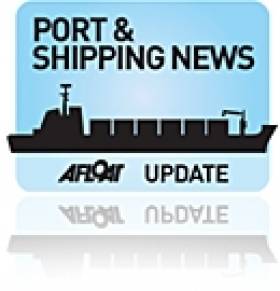Displaying items by tag: Cruisecallers
Small Is Beautiful as Cruiseships Call Closer to Capital
Clipper Odyssey is an unusual caller to the capital as she normally operates cruises in the Pacific Ocean from New Zealand to the Russian Far-East. As for Le Diamant she is a frequent caller not just to Dublin but throughout Irish ports during the season.
The Bahama-flagged 110-passenger Clipper Odyssey is scheduled to depart this evening around 21.45hrs. She is bound for Dunmore East with an lunchtime arrival off the Waterford fishing port. Le Diamant with a capacity for up to 226 passengers follows with a departure set for 23.00hrs and she is bound for Fishguard Harbour, the gateway to the scenic Pembrokeshire Coast National Park.
Currently only small cruiseships can dock within the 'Docklands' quarter quays due to the limitations imposed on dimensions, as vessels transit through the East-Link toll lift-bridge which was built in 1984. The majority of cruiseships, which are considerably larger and can exceed over 100,000 gross tonnes, berth 2kms downriver mostly in Alexandra Basin and adjoining Ocean Pier.
There are proposals to build a dedicated cruise-terminal close to the East-Link bridge on the far side at North Wall Quay Extension, which would allow such larger vessels to dock. This would facilitate easier access for cruise tourists to visit the attractions of the city-centre and indeed the nearby amenities of the O2 Arena, which would be within walking distance of the proposed cruise terminal.
- Dublin Port
- Dublin Docklands
- Sir John Rogerson's Quay
- Cruise Liners
- Cruiseships
- Sean O'Casey Bridge
- River Liffey
- Cruise Liner news
- Samuel Beckett Bridge
- Cruisecallers
- Le Diamant cruiseship
- Clipper Odyssey cruiseship
- Dublin GasWorks
- Dublin Gasometer
- Ringsend Gasworks
- Pembrokeshire Coast National Park
- O2 Arena
Record Profits for Foynes Port as Tonnage Increases
The boost is revealed in the state-owned company's annual report which shows the facility made a bottom-line profit for the year of €1.1 million – a five-fold increase on 2009. Operating cash flows rose to €3 million, up from €2.7 million a year earlier. To read more click HERE.
Late last month the Co. Limerick port was busy particularly with the seasonal arrival of three cruise ships and all made within one week, for more click HERE. This Friday sees the return of one of those cruise-callers, the French-flagged Le Diamant which is on charter to operator Inter Cruises.

























































